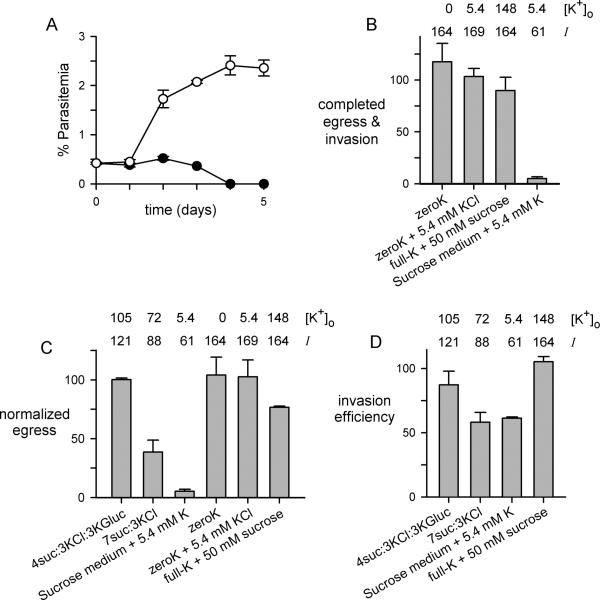Fig. 7.
An ionic strength requirement for parasite cultivation. (A) Parasite growth in 4suc:3KCl:3Kgluc and 7suc:3KCl media (white and black symbols, respectively; mean ± S.E.M. of 5 replicates from two trials). Both media were supplemented with 7% human serum, which provides sufficient Na+ for cultivation. (B) Progression from late-stage schizonts to ring-stage infected erythrocytes in indicated media. (C) Number of merozoites released from late stage-schizont cultures over a 4 h incubation in each medium. (D) Erythrocyte invasion by mechanically freed merozoites resuspended in indicated media. In panels (B), (C), and (D), each bar represents the mean ± S.E.M. of up to 8 trials after normalization to 100% in matched controls using RPMI 1640 medium. The nominal K+ concentration and calculated ionic strength (I) of each medium prior to addition of serum is listed above the bars. Two media, zeroK with or without added K+, were supplemented with dialyzed serum to minimize contaminating K+, but all other media used undialyzed serum to provide Na+ at required levels.

